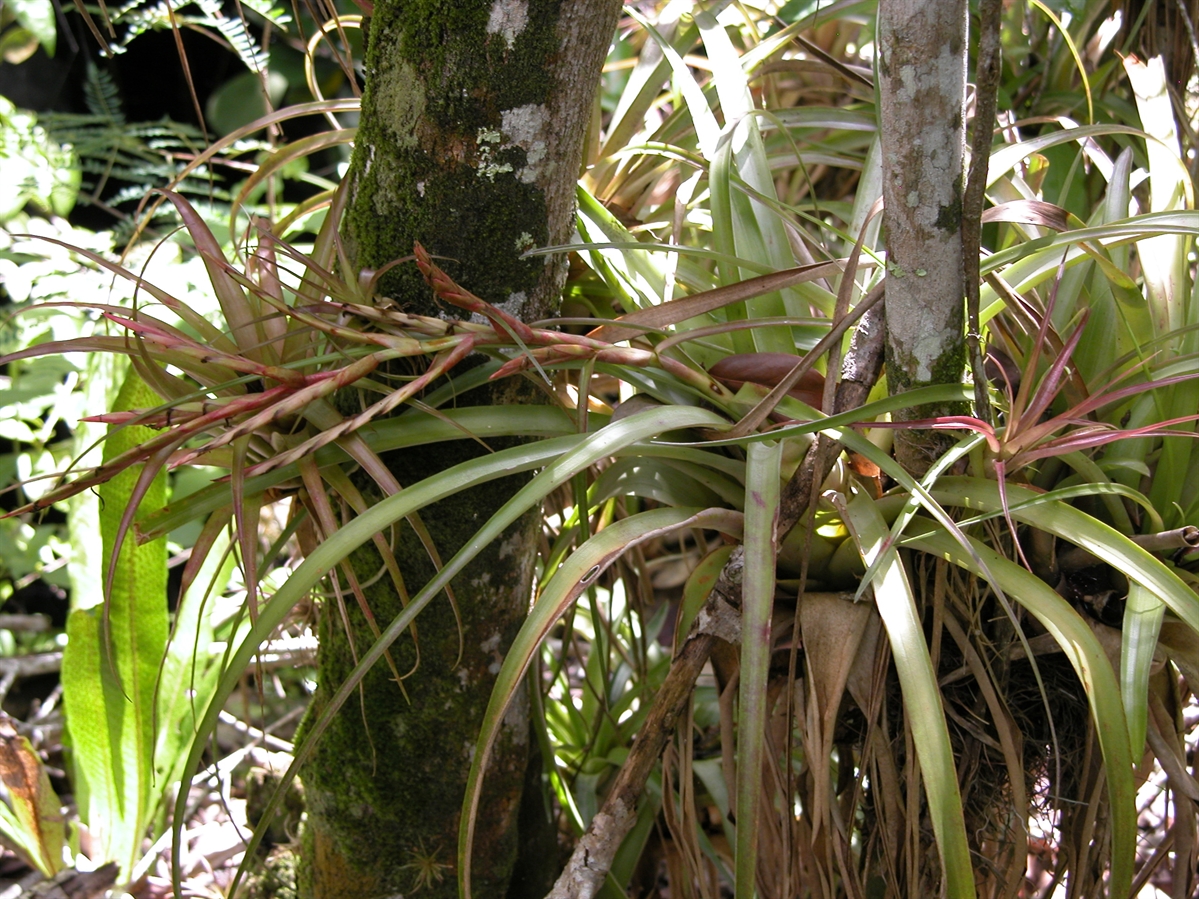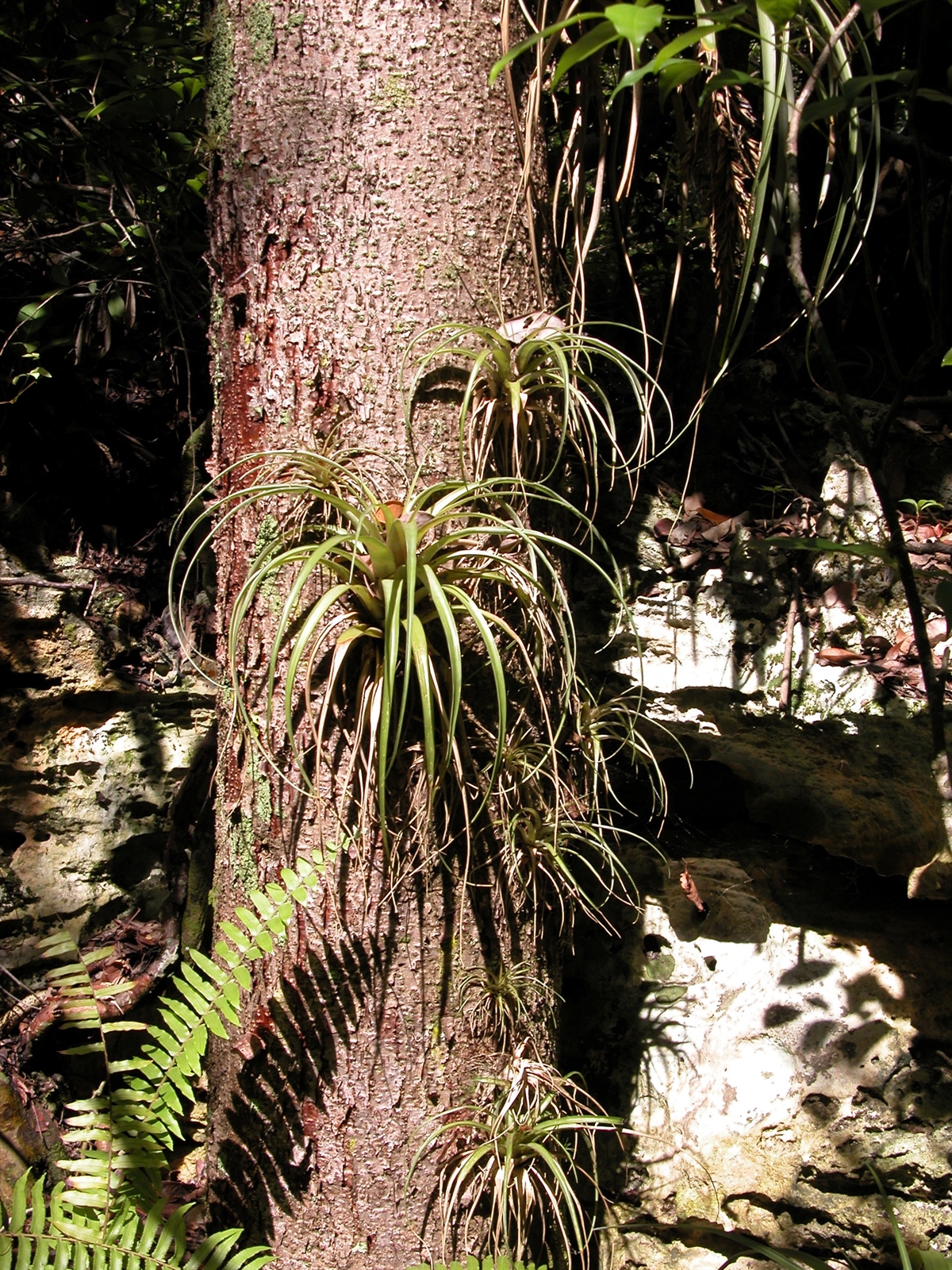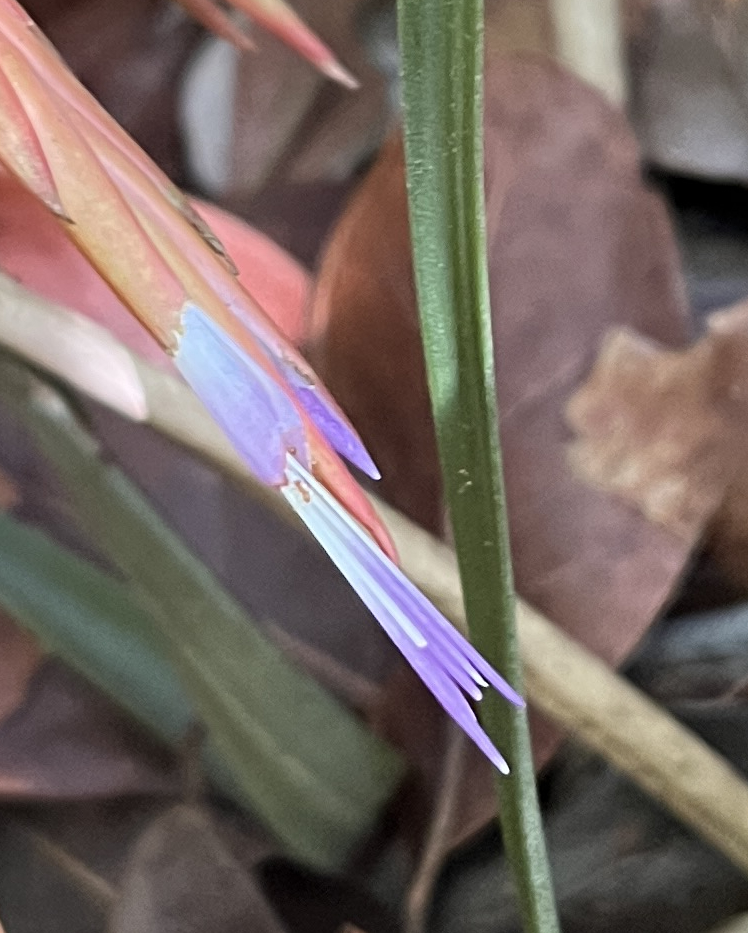Habit: Tillandsia polystachia grows without discernible stems up to 60 cm in height. The leaves are in a spreading rosette forming a series of cups at their base that can hold water and detritus. The leaves are parallel veined, linear triangular, to 3 cm wide at the base and 60 cm in length. the leaf margins can be purple red.
The complete, perfect, actinomorphic flowers, each with a subtending bract, are arranged in erect or lax panicle of spikes that are up to 30 cm in height. The bracts are greenish and tightly appressed to the peduncle. There are 3 green unfused sepals in the calyx that are equal to the length of the bracts. There are 3 violet petals in the corolla. There are 6 stamens that are longer than the petals. The ovary is superior with 3 locules and numerous seeds. The fruit is a capsule. Each seed has a tuft of hair to assist in dispersal.
Habitat: Tillandsia polystachia as an epiphyte or lithophyte in Sabal palmetto Woodlands and Dry Broadleaf Evergreen Formation- Forest/Shrublands (coppice) with a limestone substrate.
Distribution: Tillandsia polystachia grow on the central island groupings within the Lucayan Archipelago, the Caribbean, Florida, Mexico, and Central and South America.
Medicinal/Cultural/Economic usage: Tillandsia polystachia is not known to be used medicinally in the Lucayan Archipelago.



